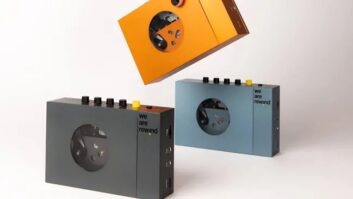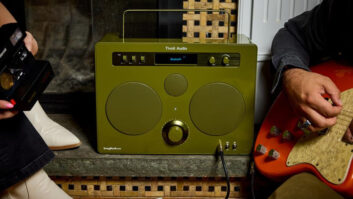LAS VEGAS — Sales of active Bluetooth speakers are soaring because of Apple’s change in docking-pin connectors, the rise of Android smartphones, and the rise of music-storing smartphones, which consumers prefer to keep in hand, audio suppliers say.
The same factors are encouraging a proliferation of Bluetooth in shelf systems, boombox-style portables and alarm clocks.
Here at International CES, dealers will find new companies entering the market and others expanding their selections. In addition, more companies will embed Bluetooth in such audio products as clock radios, AM/FM/CD-equipped shelf systems and soundbars.
Companies such as Sharp and Naxa are embedding Bluetooth in AM/FM/CD-equipped shelf systems, with Naxa also showing a Bluetooth boombox. Soundfreaq, Philips and Spectra’s Jensen brand are showing new Bluetooth-equipped alarm clocks.
In other Bluetooth-related developments, Sharp and Denon are showing their first Bluetooth speakers, Kicker is adding its second, start-up Damson is expanding its selection, and Philips is also expanding its selection, which includes its first two Bluetoothe-quipped bookshelf speaker pair.
In addition, a greater selection of Bluetooth speakers is turning up with ability to stream the AptX or AAC codecs, or both, over Bluetooth. They include new models from Altec Lansing, LG, Kicker and Philips, which are adding AptX for the first time. Philips is also unveiling its first Bluetooth speakers with AAC streaming over Bluetooth.
For their part:
• Nyne, SuperTooth and Kicker are launching their first Bluetooth speakers with nearfield communications (NFC);
• Sharp is adding NFC to a Bluetooth-equipped home-theater soundbar for the first time and adding Bluetooth for the first time to shelf systems; and
• Spectra is expanding its selection of Jensen-brand dock-less Bluetooth speakers and its selection of speakers and clock radios equipped with Apple’s Lightning connector.
The products are entering a market in which 2013 U.S shipments of wireless speakers were estimated by Futuresource to grow by 168 percent to 7.5 million, 85 percent of which were Bluetooth speakers. The rest were Wi-Fi-equipped AirPlay and multi-room-audio speakers, the company said. Unit wireless sales are forecast to grow in 2014 by 51 percent to 11.3 million.
Sales of wireless-equipped docking-speakers are also growing, Futuresource said. U.S. shipments rose an estimated 35 percent in 2013 to 2.3 million and are forecast to grow by 17 percent in 2014 to 2.7 million.
Meantime, sales of docking speakers without wireless fell in 2013 by 39 percent to 6.8 million and are forecast to fall another 47 percent in 2014 to 3.6 million, Futuresource said.
All told, combined unit shipments of wireless-only, docking-only and wireless/docking speakers rose an estimated 7 percent in 2013 to 16.6 million and are forecast to rise 6 percent in 2014 to 17.6 million, with factory-level dollar volume rising to about $1.5 billion in 2014.
By 2017, with Wi-Fi chips increasingly incorporating Bluetooth at negligible incremental cost, Futuresource forecast that wireless speakers combining Wi-Fi and Bluetooth will account for 45 percent of wireless-speaker shipments by 2017, with Bluetooth-only speakers focused on the lower end.
Toshihide Hokari, Imation’s product management and marketing executive director, attributed Bluetooth growth to three factors: “First, because the Bluetooth technology allows [consumers] to keep the smartphones on them at all times. Second, Bluetooth technology works with most brands and is not hardware-dependent, and third, the overall experience, ease of use and audio quality continues to improve.”
Said ABI Research, “iOS-centric digital speaker products, like speakers with docks, lead the market, but a turning point came when Apple switched from the 30-pin connector to its new Lightning connector, compelling customers to place additional value on more universal solutions like Bluetooth.”
For his part, Russ Johnston, Pioneer Americas marketing and corporate communications executive VP, attributed Bluetooth-speaker popularity in part to Apple’s shift from a 30-pin to an eight-pin docking connector. “Since the transition [by Apple] from the 30-pin connector, all of the consumer attention has shifted to Bluetooth connectivity,” he said. “Retailers have been real reluctant to support a docking speaker since, and the focus has been on Bluetooth connected speakers,” he added.












